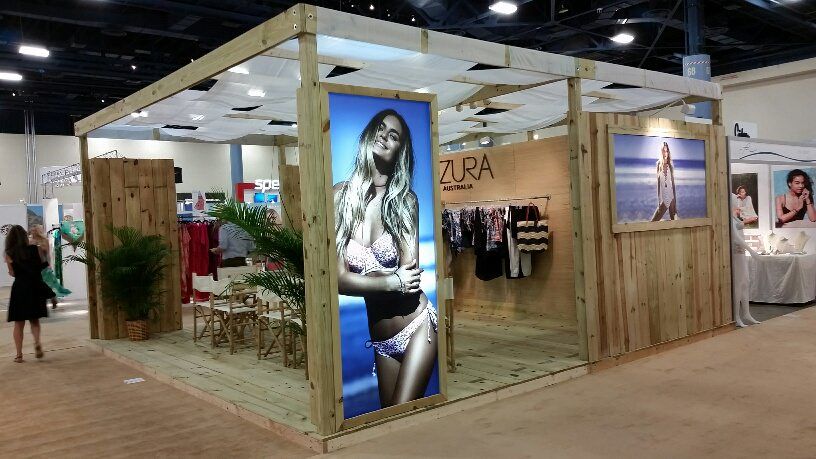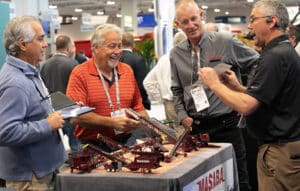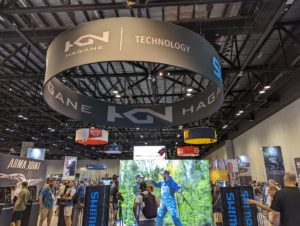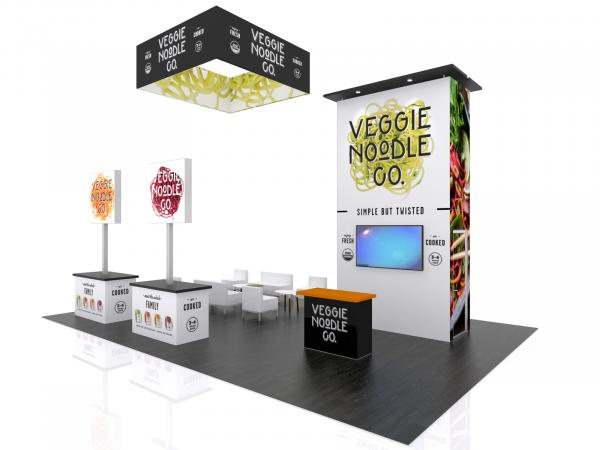Trade shows offer a golden opportunity for brands to showcase their clothing lines and make lasting impressions. But the secret to captivating visitors isn’t just about having great clothing—it’s about how you display them.
A well-thought-out presentation can draw attention, tell a compelling story, and drive sales. From understanding who you’re trying to attract, to selecting the right fixtures like mannequins and racks, every detail matters. Trade show lighting plays a pivotal role, as it can enhance the appeal of garments. Organizing by themes or collections, offering interactive experiences, and ensuring ease of movement are equally crucial. Plus, personal touches that resonate with your brand’s story can make your booth stand out. And remember, cleanliness and organization are paramount; a tidy space reflects professionalism. Gathering feedback is a continuous journey, helping brands adjust and deliver an even better experience next time. With the right approach, your clothing display can become the star of any trade show.
The Key to Effective Clothing Display at Trade Shows
In the buzzing realm of trade shows, surrounded by an array of brands, designs, and setups, one can easily lose sight of the essence: who you’re truly trying to reach. Successfully navigating this space isn’t about casting the widest net, but about fishing in the right pond. This means understanding your target audience in-depth and designing your display to cater precisely to them.
Who are you trying to attract?
Taking a moment to analyze and identify your target audience is the cornerstone of any successful display strategy. Start by asking yourself some fundamental questions:
- Are they millennials hungry for avant-garde fashion, or are they middle-aged individuals who appreciate timeless classics?
- Are they young parents looking for comfortable, yet stylish children’s wear, or perhaps teenagers on the lookout for the latest in streetwear?
- Do they value sustainability and look for eco-friendly options, or are they more focused on luxury and exclusivity?
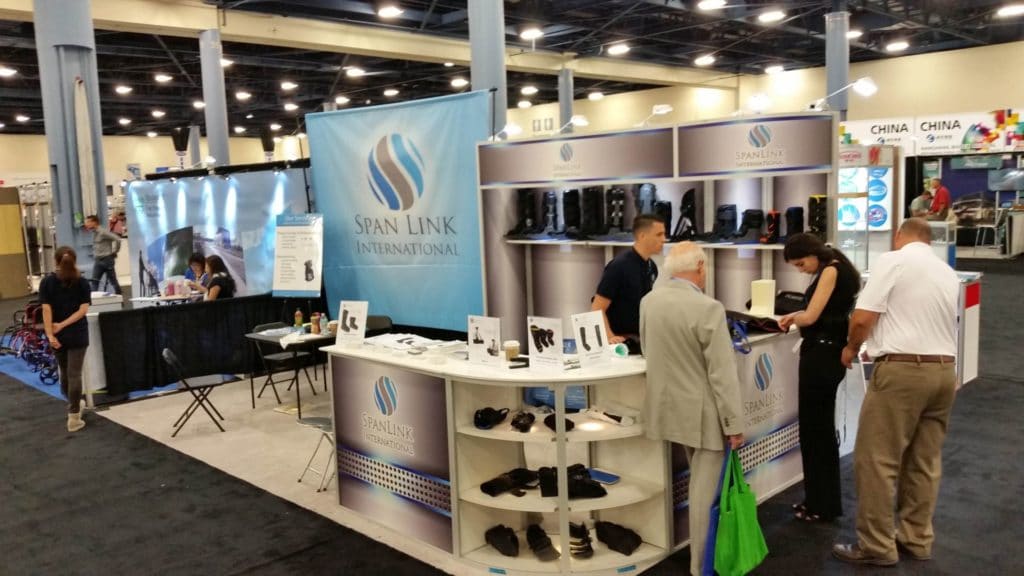
These queries help you delineate the kind of visitor you want to attract. By narrowing down the specifics, you’re not only setting a clear direction for your display but also ensuring that your efforts resonate with the right crowd.
Tailoring displays to fit their interests.
Knowing your audience is one half of the equation; the other half is molding your display to match their interests. This doesn’t just mean aligning with their fashion preferences, but also considering other aspects that matter to them:
- For young adults and teenagers, integrating elements of pop culture, music, or trending themes can make the space relatable and appealing. Using bright colors, interactive spaces, or even tech elements like QR codes linked to fashion apps or social media could be a hit.
- For those seeking classic styles, creating a serene ambiance with muted tones, sophisticated mannequins, and elegant lighting can evoke a sense of luxury and timelessness. Perhaps even weaving in a historical narrative or showcasing the evolution of a particular style could add depth.
- For parents, a display that’s interactive for kids can be a bonus. Think of miniature ramps for kids to walk, play areas, or even a section dedicated to storytelling about the adventures of characters wearing the brand’s clothing line.
Read more about how to get exhibitors for a trade show.
At the end of the day, the goal is to create a display that feels like a personalized experience for your visitor. When they step into your space, they should feel like the setup speaks to them, understands their needs, and presents solutions in the form of your clothing line.
How to Display Clothing at a Trade Show? Choosing the Right Display Fixtures
When you’re showcasing clothing at a trade show, the kind of fixtures you opt for can dramatically affect how visitors perceive your collection. It’s not just about displaying clothes; it’s about creating an environment that highlights the best features of each garment and communicates the essence of your brand. Let’s dive deeper into how you can make the most of your display tools.
Mannequins: Selecting the right style and pose.
Think of mannequins as silent ambassadors of your brand. They provide a 3D canvas that brings your clothes to life. The type, style, and pose of a mannequin should complement the type of clothing you’re promoting.
- For athletic or activewear, a mannequin in a dynamic pose, as if it’s in motion, can highlight the flexibility and utility of the clothes.
- If you’re dealing with luxury wear or formal outfits, a poised, elegant posture is more fitting.
- Additionally, consider the type of mannequin – realistic with detailed features, abstract with minimalistic details, or even headless, depending on the focus you want to give to the garment.
Remember, the right mannequin not only showcases the clothing but also tells a story about who wears it and how.
Clothing racks: Types and their advantages.
Racks are more than just storage; they are strategic display tools:
- Circular racks: Ideal for maximizing display in limited spaces. They allow for a 360-degree view, making them great for items like dresses or coats that have details on all sides.
- Straight racks: They offer a linear and clean presentation, allowing a sequential display. This is useful if you’re showcasing a clothing line with variations in design.
- Wall-mounted racks: A space-saver, these give a streamlined look to your display. They’re also great for defining sections or creating dedicated spaces for specific types of clothing.
Each type of rack serves a unique purpose, and using a combination can create a dynamic and layered presentation.
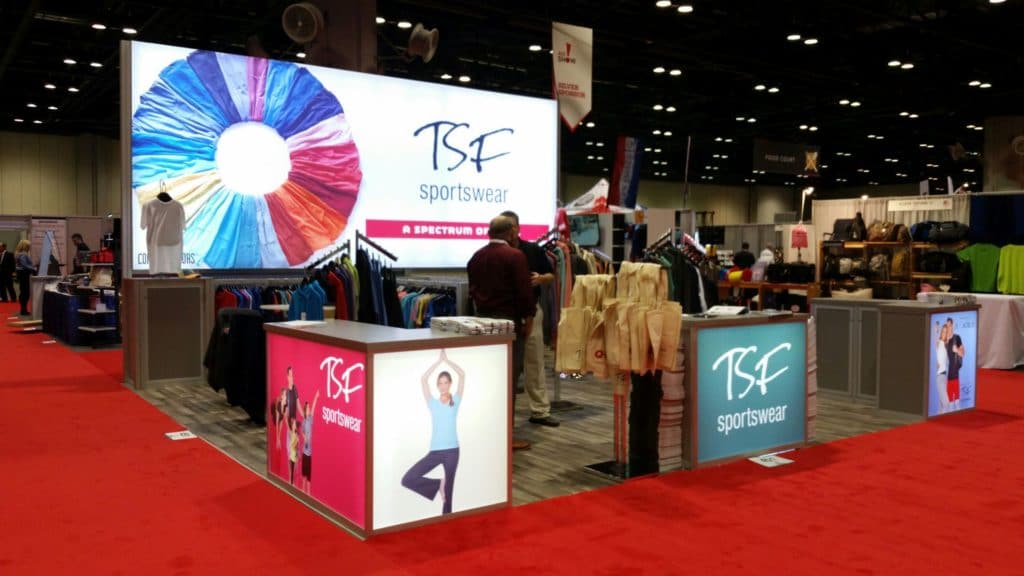
Display tables and shelves.
Tables and shelves introduce versatility to your display:
- They’re perfect for laying out folded garments, especially those which might lose their shape or design appeal when hung.
- Use them for accessories, handbags, shoes, or even promotional materials.
- Adding layers with shelves, especially with items of varying heights, can draw attention and make your display more interactive.
Importance of varied heights and layers in a display.
An engaging display is multidimensional. Instead of a uniform, flat presentation, think of your display in terms of layers and levels:
- Elevated platforms can spotlight hero products or best-sellers.
- Using fixtures of varying heights creates a visual journey, encouraging visitors to move their gaze up and down, exploring every part of your display.
- This kind of layout not only maximizes the visibility of your products but also makes the overall space more aesthetically appealing, inviting visitors to explore and engage longer.
In conclusion, the fixtures you select are integral in narrating your brand’s story. By wisely choosing and positioning them, you can optimize the presentation of your products and create an unforgettable trade show display.
Read more about how to build a trade show booth.
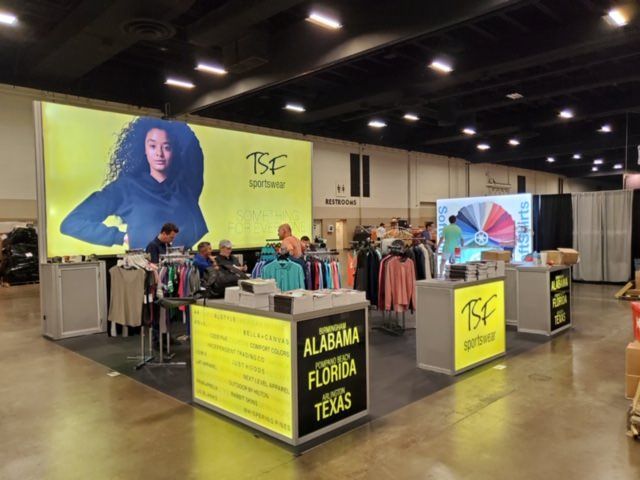
How to Display Clothing at a Trade Show? Incorporating Effective Lighting
Lighting isn’t just about illuminating a space; in the context of trade shows and clothing displays, it’s a transformative tool that can set the mood, draw attention, and enhance the visual appeal of garments. Let’s delve deeper into how to effectively utilize lighting for maximum impact.
The role of lighting in highlighting garments.
Lighting plays a pivotal role in bringing out the true colors, textures, and intricacies of clothing. The right lighting can:
- Emphasize the unique features of a garment, from the shimmer of a sequin dress to the weave of a hand-knit sweater.
- Create a mood or ambiance that resonates with the brand’s theme. For instance, soft lighting might evoke feelings of comfort and coziness for winter collections.
- Direct attendees’ attention to specific pieces or areas within the display, ensuring focal points receive the recognition they deserve.
Types of lights: Spotlights, ambient lighting, and accent lighting.
Understanding the different types of lighting can help you strategically illuminate your display:
Spotlights: These are intense lights aimed at specific items or areas. They’re perfect for highlighting hero pieces, new launches, or premium collections.
Ambient lighting: This is the general lighting in your booth. It sets the overall brightness and tone. While it ensures visitors can see everything clearly, it’s essential that it complements other lighting types to create a harmonious look.
Accent lighting: Slightly more subtle than spotlights, accent lighting adds depth and dimension. It’s used to draw attention to secondary features or details, like accessories or trimmings on garments.

Tips for avoiding harsh shadows.
Shadows can detract from the visual appeal of your garments, distort perceptions, and create a dull or gloomy ambiance. Here’s how you can avoid them:
- Use diffusers on spotlights or intense lights to soften the light, reducing sharp shadows.
- Opt for multiple light sources from different angles. This way, the light coming from one source can fill in the shadows created by another.
- Adjust the height and angle of your lights. Sometimes, simply repositioning a light can minimize or eliminate unwanted shadows.
- Consider using reflective surfaces or panels to bounce light around, ensuring even distribution and fewer shadowed areas.
In essence, effective lighting is a blend of art and science. By understanding its nuances, you can create a vibrant, inviting, and memorable display that truly showcases the beauty of your garments.
Read our guide how to make your trade show booth stand out.
How to Display Clothing at a Trade Show by Organizing by Theme or Collection
The way clothes are presented at a trade show can be the difference between a fleeting glance and a prolonged, engaged look from potential customers. One of the most effective strategies to captivate attendees is by organizing your clothing by theme or collection. This creates a cohesive, purposeful experience for visitors as they browse through your booth.
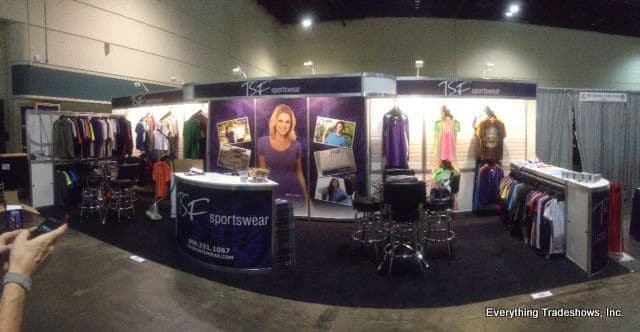
The power of storytelling in a display.
Telling a story with your display engages the imagination of the visitor. Instead of just seeing individual pieces of clothing, they see a narrative, a lifestyle, or a mood:
- For instance, a summer collection might transport the visitor to a sunny beach vacation, with each garment playing a role in that story.
- Storytelling adds depth to the shopping experience. It’s not just about “what looks good” but also about how each piece fits into a larger narrative, whether it’s a story of sustainable fashion, luxury indulgence, or urban street style.
Grouping items by season, color, or style.
Cohesive groupings make browsing easier and more enjoyable:
Seasonal groupings: Showcasing clothing by season, like a winter collection complete with coats, scarves, and woolen hats, provides clarity and taps into current shopping needs.
Color groupings: Organizing by color not only creates visual appeal but also helps visitors quickly locate and match items. Imagine a gradient transition from pastels to deep hues, presenting a visual feast for the eyes.
Style groupings: Whether it’s casual wear, formal attire, activewear, or party dresses, segmenting by style simplifies the decision-making process for attendees. It also allows them to envision how different pieces can be paired together to create complete looks.
The role of signage and tags in guiding visitors.
While the clothing is the main attraction, supportive elements like signage and tags play a crucial guiding role:
- Signage: Large trade show hanging signs can indicate different sections or themes within your booth. For instance, a sign reading “Autumn Bliss” could introduce a fall collection. It acts as a beacon, drawing attendees to explore further.
- Tags: Beyond just pricing, tags can offer brief descriptions, fabric details, or even styling tips. They provide supplementary information that can help a visitor make a purchase decision or understand the unique selling points of a particular garment.
Read our guide how to sell at trade shows.
In conclusion, organizing by theme or collection is more than just a display tactic. It’s about creating a journey, a narrative, and an experience that leaves a lasting impression on every visitor, urging them to engage with your brand on a deeper level.
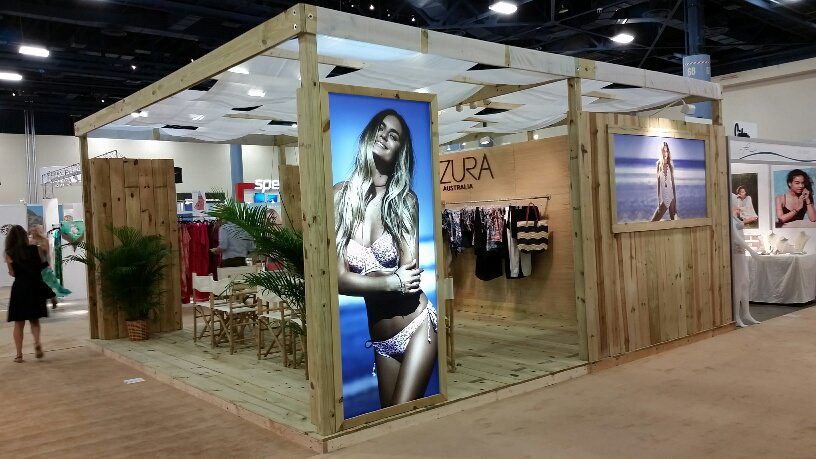
Enhancing Your Trade Show Presence: Interactive Strategies for Displaying Clothing
Trade shows offer a unique opportunity to not just showcase trade show products but to immerse attendees in memorable experiences. When it comes to displaying clothing, interactivity becomes an essential tool in bridging the gap between mere observation and genuine engagement.
Mirrors play a dual role. Firstly, they give attendees the chance to see how a scarf, hat, or accessory looks on them immediately. This spontaneity can be a game-changer in influencing purchase decisions. Secondly, mirrors can add a spacious feel to your booth, reflecting light and making the area feel more open and welcoming.
The digital realm has transformed how we experience fashion. By integrating digital screens or tablets into your display, attendees can virtually try on outfits without the need for a dressing room. This technology offers a glimpse of how different outfits might look, providing a futuristic shopping experience. Additionally, these digital tools can be used to scroll through lookbooks, offering attendees a comprehensive view of the entire collection, possible ensemble combinations, or even behind-the-scenes glimpses of the design process.
Live interactions always leave a lasting impression. Consider hosting live demonstrations where a stylist combines pieces from the collection to create different looks. These sessions can be both educational and entertaining, giving attendees styling tips they can use in their daily lives. Additionally, such demonstrations emphasize the versatility of the collection and the various ways items can be paired or layered, enhancing their perceived value.
Read our guide how to attract people to your booth.
In essence, interactive experiences are about creating touchpoints that allow attendees to engage with the clothing on a personal level. By offering them the chance to visualize, experiment, and learn, you elevate their trade show experience from mere browsing to genuine engagement.
Innovative Strategies for Displaying Clothing at Trade Shows
One key factor that can determine the success of a trade show booth, especially for clothing, is how easy and pleasant it is for attendees to navigate. A cramped or chaotic space can deter potential customers, while a well-organized and spacious area can invite more interactions and positive experiences.
Spacing considerations: Allowing attendees to move comfortably.
The importance of spacing cannot be overstated. Attendees should have enough room to browse without feeling crowded or overwhelmed. This means ensuring there’s adequate space between racks, displays, and other fixtures. A comfortable browsing space lets visitors examine garments closely, pick them up, and even try them on without feeling rushed or confined. Moreover, it reduces the risk of accidental spills, trips, or damages, ensuring a smooth experience for both visitors and exhibitors.
Pathways and flow: Guiding visitors through your display.
A well-thought-out flow can make a significant difference in how attendees experience your booth. Creating clear pathways can guide visitors in a logical sequence through your collections or themes. This not only ensures that they see all you have to offer but also creates a more structured and intuitive shopping experience. Directional signs, strategic placement of standout pieces, or even carpeting can subtly steer visitors in the desired direction. Additionally, by considering the flow, you can ensure that there are no bottlenecks or dead ends, making the browsing experience seamless and enjoyable.
In conclusion, while the garments themselves are of utmost importance, the spatial trade show booth design plays a crucial role in influencing attendees’ perceptions and experiences. By ensuring ease of movement and a logical flow, exhibitors can make their booth a welcoming and memorable space for all visitors.
How to Display Clothing at a Trade Show? Adding Personal Touches
A trade show booth serves as a reflection of your brand’s identity and values. Beyond the clothing and general display, infusing personal touches can create an authentic connection between the attendees and the brand. These nuanced elements can differentiate your booth from the crowd and make the experience memorable for visitors.
Incorporating brand elements: Logos, brand colors, and slogans.
The visible incorporation of brand elements, such as logos, brand colors, and slogans, establishes a strong brand presence. Displaying your logo prominently ensures immediate recognition and reinforces brand recall. Utilizing brand colors in the decor, fixtures, or even the lighting creates a consistent visual theme that attendees will associate with your brand. Similarly, integrating brand slogans or catchphrases can communicate your brand’s ethos or highlight its unique selling points. By doing so, attendees not only see individual garments but also experience the brand’s broader narrative and vision.
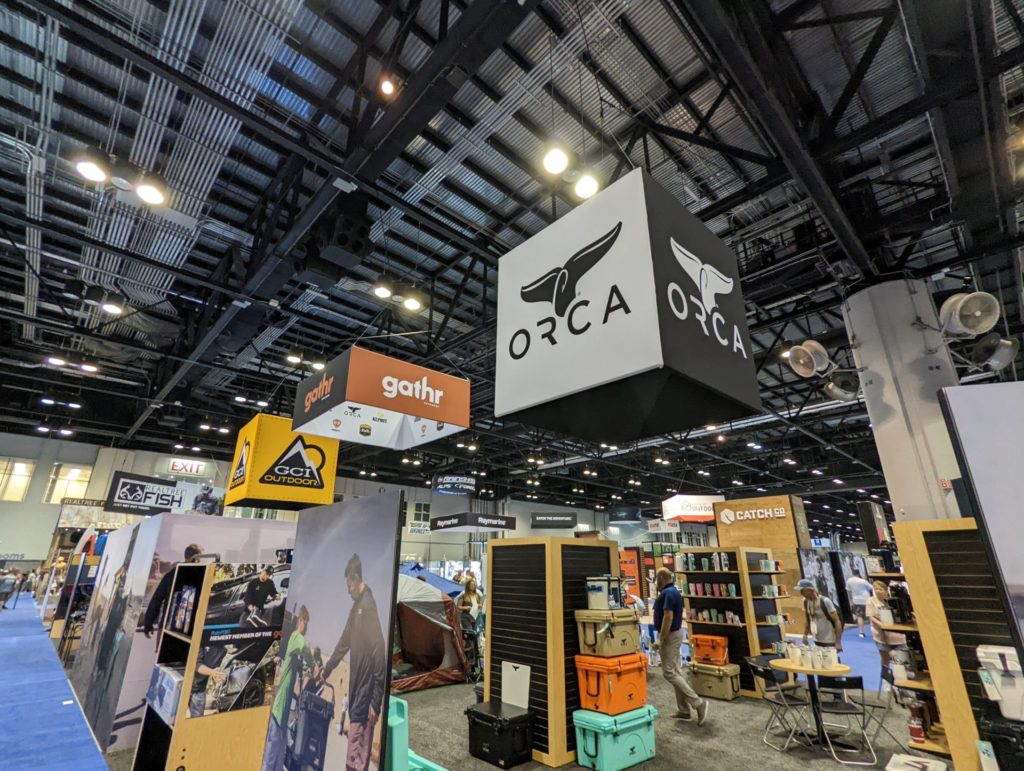
Using props that resonate with your brand story or theme.
Props can be powerful storytelling tools, giving depth and context to your clothing collection. For instance, if your brand emphasizes sustainable fashion, consider using props like recycled materials or greenery. If you’re showcasing a beachwear collection, elements like sand, surfboards, or seashells can transport attendees to a seaside setting. By aligning props with your brand’s story or the theme of the collection, you create a holistic experience. These props don’t just serve as decorations; they immerse visitors in the world you’ve crafted and emphasize the inspiration behind your collection.
Staying Organized and Clean
In the bustling environment of a trade show, where countless booths vie for the attention of attendees, the state of your booth can either attract or repel potential customers. An organized and clean space communicates professionalism, attention to detail, and respect for both your products and the attendees.
Importance of cleanliness in presenting a professional image.
First impressions matter. A clean and tidy booth is instantly more appealing, signaling to attendees that the brand takes pride in its presentation. It speaks to the quality and care the brand invests in its products. On the flip side, a cluttered or dusty booth can deter attendees, as it might imply neglect or disinterest. Moreover, cleanliness directly impacts the perception of the brand’s reliability and trustworthiness. In the context of a clothing trade show, where attendees are likely to touch and try items, cleanliness ensures the products remain in top condition.
Daily maintenance: Dusting, straightening, and re-folding items.
Throughout the duration of the trade show, your booth will require regular upkeep. This means:
- Dusting fixtures and displays to ensure they look pristine and inviting. This is especially crucial for glass surfaces or shiny metals that might show fingerprints or smudges.
- Straightening items, so they are presented in the best possible manner. This involves aligning hangers, ensuring clothes face the same direction, and maintaining a consistent spacing between items.
- Re-folding garments that have been browsed through or tried on by attendees. Properly folded items not only look neater but also allow attendees to clearly see designs, sizes, and other details.
Having a designated storage area for extra stock.
It’s essential to have a steady flow of stock, especially for popular items that might quickly sell or be given out. However, it’s equally vital to avoid clutter. A designated storage area, preferably hidden from the main display but easily accessible, ensures you have a backup without crowding the display area. This storage space can house extra inventory, packaging materials, and other essentials. Having such an area also simplifies the restocking process, ensuring minimal disruption to the booth’s operation and appearance.
In conclusion, staying organized and maintaining cleanliness is not merely a matter of aesthetics; it’s a reflection of the brand’s values and its commitment to offering the best to its customers. In the competitive environment of a trade show, these details can significantly influence attendees’ perceptions and decisions.

How to Display Clothing at a Trade Show? Conclusion
Trade shows are bustling hubs where brands compete for attention, making it imperative for businesses to stand out. Displaying clothing isn’t just about hanging items for people to see. It’s an art that combines understanding your audience, choosing the right fixtures, and crafting an engaging narrative. Every small element, from the lighting used to the colors chosen, plays a vital role in how attendees perceive your brand.
Adding personal touches, like brand logos or theme-resonating props, makes your booth unique and memorable. This individuality is further enhanced by ensuring that the space is clean, organized, and easy to navigate. These efforts, though seemingly minor, can greatly influence an attendee’s experience, possibly converting them into a customer or at least a brand advocate.
But beyond all these tactical efforts, what truly stands out is the experience you offer. When visitors leave your booth, they should carry with them not just a memory of the clothes they saw, but a vivid recollection of the story you told, the emotions you evoked, and the brand’s essence. As you step into your next trade show, remember, it’s this holistic experience that will make all the difference. In the vast sea of exhibitors, aim not just to be seen but to be remembered.
How to Display Clothing at a Trade Show? FAQs
What’s the first step in planning a clothing display at a trade show?
Before diving into specific display tactics, it’s crucial to understand your target audience. Knowing who you’re trying to attract helps tailor your display to their preferences and interests.
Why is choosing the right display fixture important?
The right fixture not only showcases the clothing effectively but also aligns with the brand’s aesthetic. For example, mannequins can show how outfits look when worn, while varied rack types can cater to different garment styles and booth spaces.
How can lighting enhance a clothing display?
Proper lighting highlights the details and colors of the clothing, drawing attention to specific garments. Different lighting types, like spotlights or ambient lighting, can set the mood and make certain pieces stand out.
Why should I consider organizing the display by theme or collection?
Organizing by theme or collection creates a cohesive narrative. It offers attendees a structured browsing experience, making it easier for them to locate and appreciate items that are grouped by season, color, or style.
How can I make my booth more interactive?
Incorporating elements like mirrors, digital screens, and live styling sessions engages attendees, offering them more than just a visual experience. This interactivity can influence purchasing decisions and foster deeper connections with the brand.
What’s the importance of spacing in a trade show booth?
Adequate spacing ensures attendees can move comfortably. It prevents the booth from feeling overwhelming or claustrophobic and allows visitors to browse and engage with items without feeling rushed.
How do personal touches influence attendees?
Personal touches, like brand logos or unique props, make a booth memorable. They convey a brand’s story and values, fostering a deeper connection between the attendee and the brand.
Why is cleanliness crucial in a clothing trade show display?
A clean and organized booth presents a professional image. Regular maintenance, like dusting and straightening, ensures the garments remain in top condition and communicates the brand’s attention to detail.
How can I effectively manage and store extra stock during the trade show?
Having a designated, hidden storage area for extra stock ensures a clutter-free display. This area can also house essentials, simplifying the restocking process and minimizing disruptions.
In conclusion, what’s the primary goal of a clothing display at a trade show?
Beyond showcasing products, the primary goal is to create a memorable and engaging experience. It’s about storytelling, brand representation, and fostering genuine connections with attendees.
Learn more about trade show best practices:
- Discover essential trade show tips for exhibitors to maximize your booth’s potential.
- Learn more about how to collect leads at a trade show.
- Unsure about the best way to showcase your products at a trade show? Take a look at our comprehensive guide.
- Implementing engaging activities is essential for learning how to attract people to your booth.
- Explore strategies on how to get exhibitors for a trade show.
- Read more how to have a successful trade show booth.
- Uncover the secrets to creating a standout trade show booth through these cutting-edge design strategies!
- To enhance your marketing skills, learn how to plan a trade show for maximum impact and audience engagement.
- Effective research is vital in understanding how to prepare for a trade show.
- Learn how to sell at trade shows to maximize your business’s potential and outreach.
- Explore our comprehensive manual on establishing a booth at a trade show.
- Discover the best practices on how to ship to a trade show for a seamless experience.
- Many businesses boost their revenue by selling at trade shows. Read our blog post.
- Here are some trade show attendee tips to help you make the most of your experience.
- Take a deep dive into our comprehensive trade show best practices handbook.
- Don’t forget to review the trade show checklist before the event to ensure everything is in order.
- Here are some trade show exhibitor tips to help you succeed at your next event.
- Exploring options for trade show giveaways? Take a glance at our assortment of promotional merchandise!
- Here are some trade show giveaway ideas to attract visitors to your booth.
- What makes a good trade show booth? Find out in our latest blog post.
- Looking for trade show banner ideas? Check out our latest design inspirations!
- Discover our trade show attire tips by checking out our comprehensive guide on what to wear to a trade show.
- Are you interested in what type of promotion takes place at trade shows? Explore this topic.
- Why attend trade shows? Discover the best arguments.
- What motivates exhibitors to participate in trade shows? Explore this topic further on our blog for detailed insights.
- Discover the answer to this common question: Why exhibit at a trade show?
- Discover the significance of trade shows.

It’s in the name! Everything Tradeshows is your one-stop shop for all things trade shows, including booth purchases, booth rentals, and complete brand management services. Ready to get started? Have questions? Get in touch by calling us at (954) 791-8882 or by filling out the form below. We can’t wait to hear from you!

